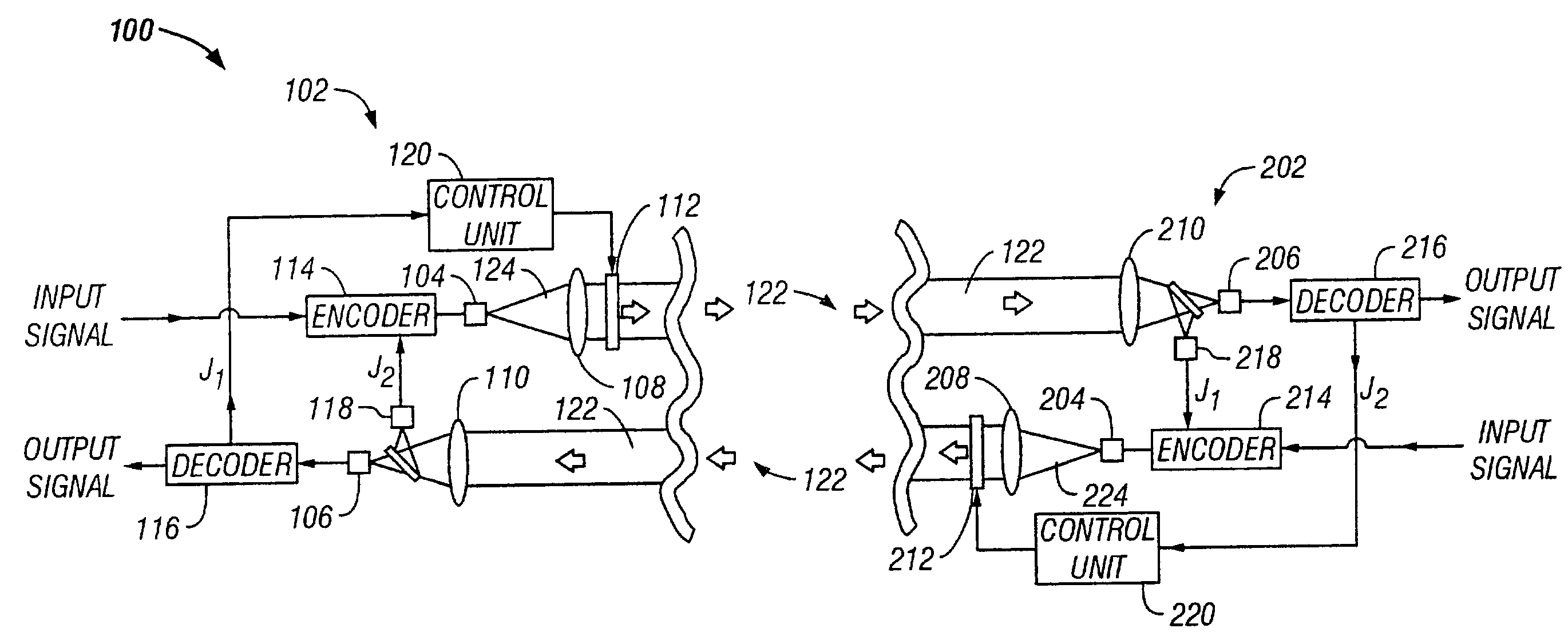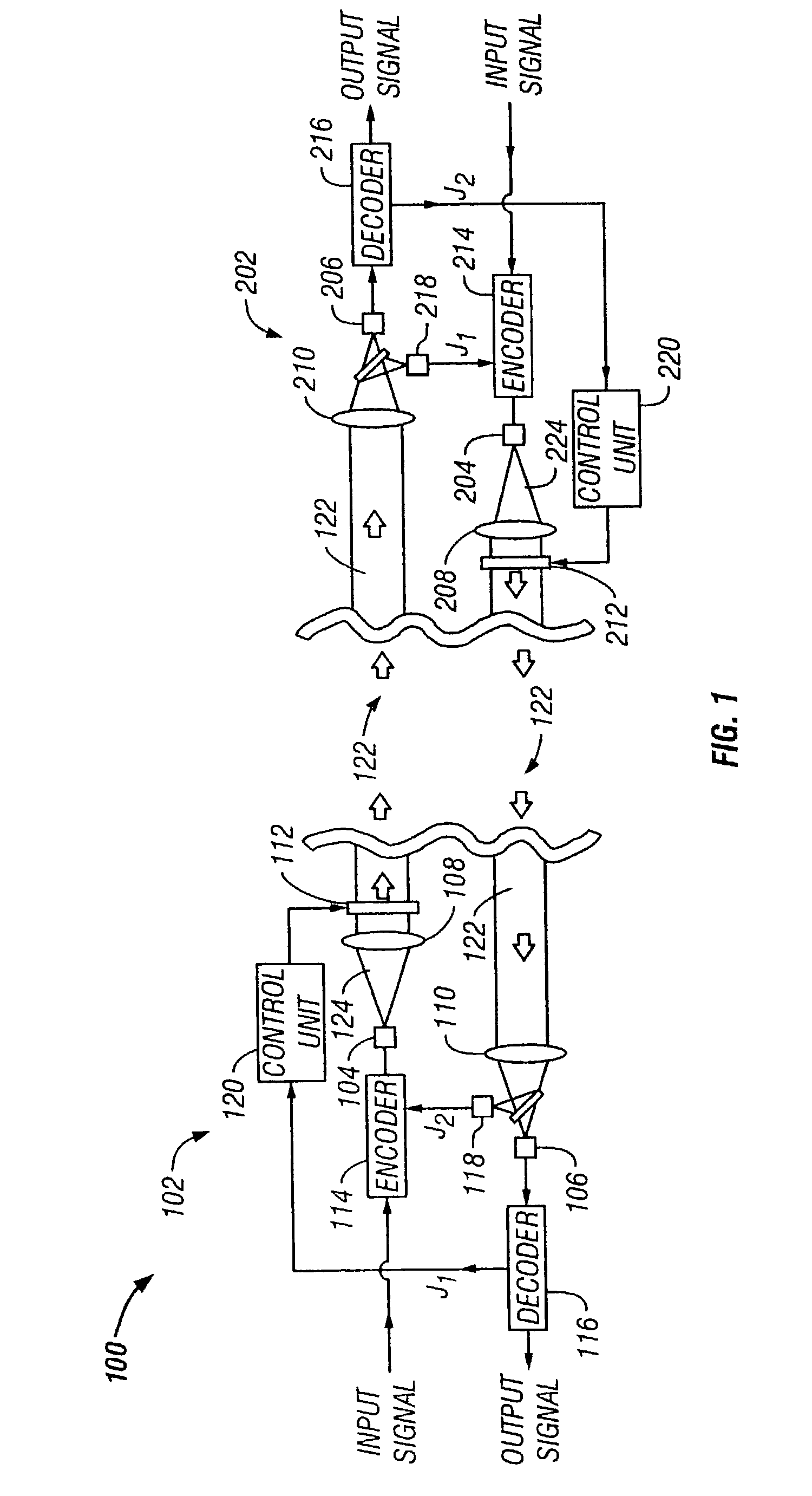Adaptive correction of wave-front phase distortions in a free-space laser communication system and method
a free-space laser and wave-front phase correction technology, applied in electromagnetic transmission, electrical equipment, transmission, etc., can solve the problems of limited free-space laser communication system performance, increased system bit error rate, and poor system performance of certain types of systems
- Summary
- Abstract
- Description
- Claims
- Application Information
AI Technical Summary
Problems solved by technology
Method used
Image
Examples
Embodiment Construction
[0007]The following describes a novel approach to monitoring the atmospheric channel during communication, and to sharing this channel condition information between two free-space laser communication transceivers operating in duplex (two-way) mode for adaptive compensation of atmospheric turbulence-induced distortions. As will be shown below, improvements in the ability to point (direct) and focus (lock) a laser beam in a duplex free-space laser communication system are made. The resulting beam position stabilization and improved beam focusing reduces system bit error rates due to optical turbulence, offering more robust and reliable free-space laser communication system performance and the potential for increased communication distances.
[0008]Referring to FIG. 1, a schematic diagram of an adaptive duplex free-space laser communication system 100 comprising two laser communication transceivers 102, 202 is shown. In one example, the two transceiver modules 102, 202 are identical. In ...
PUM
 Login to View More
Login to View More Abstract
Description
Claims
Application Information
 Login to View More
Login to View More - R&D
- Intellectual Property
- Life Sciences
- Materials
- Tech Scout
- Unparalleled Data Quality
- Higher Quality Content
- 60% Fewer Hallucinations
Browse by: Latest US Patents, China's latest patents, Technical Efficacy Thesaurus, Application Domain, Technology Topic, Popular Technical Reports.
© 2025 PatSnap. All rights reserved.Legal|Privacy policy|Modern Slavery Act Transparency Statement|Sitemap|About US| Contact US: help@patsnap.com



